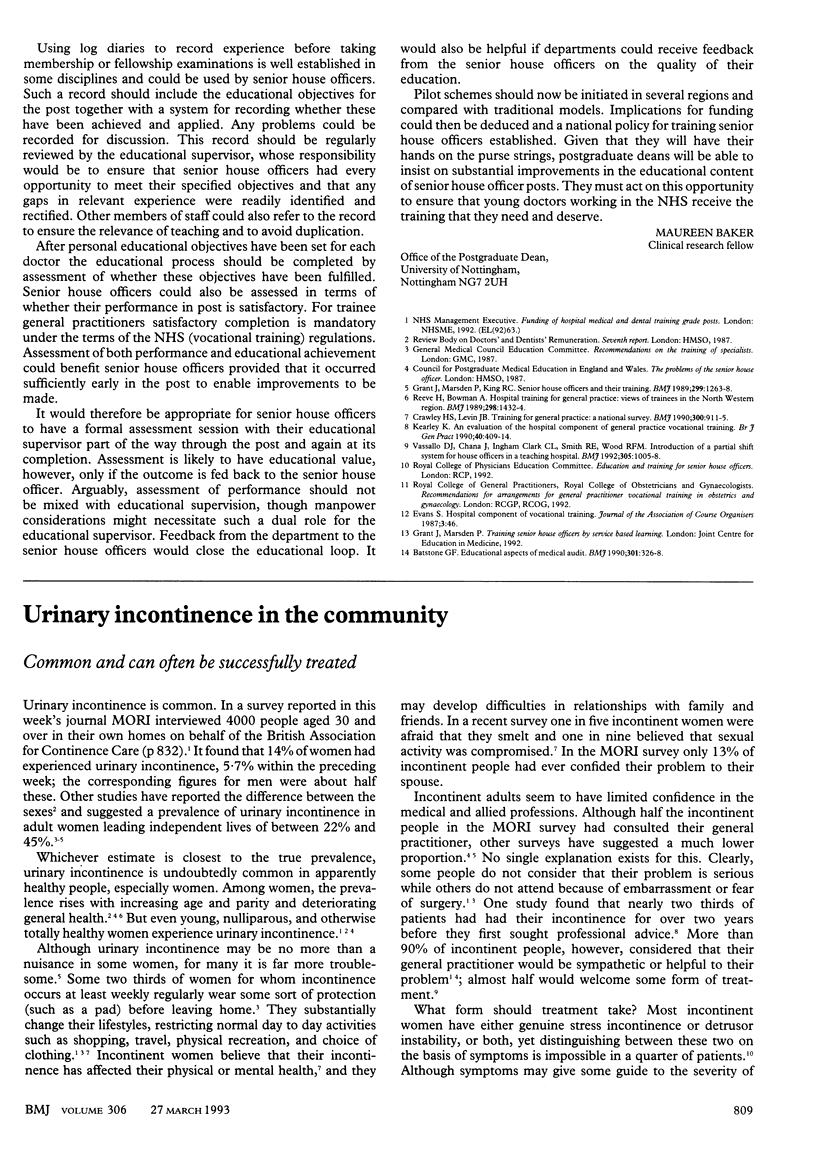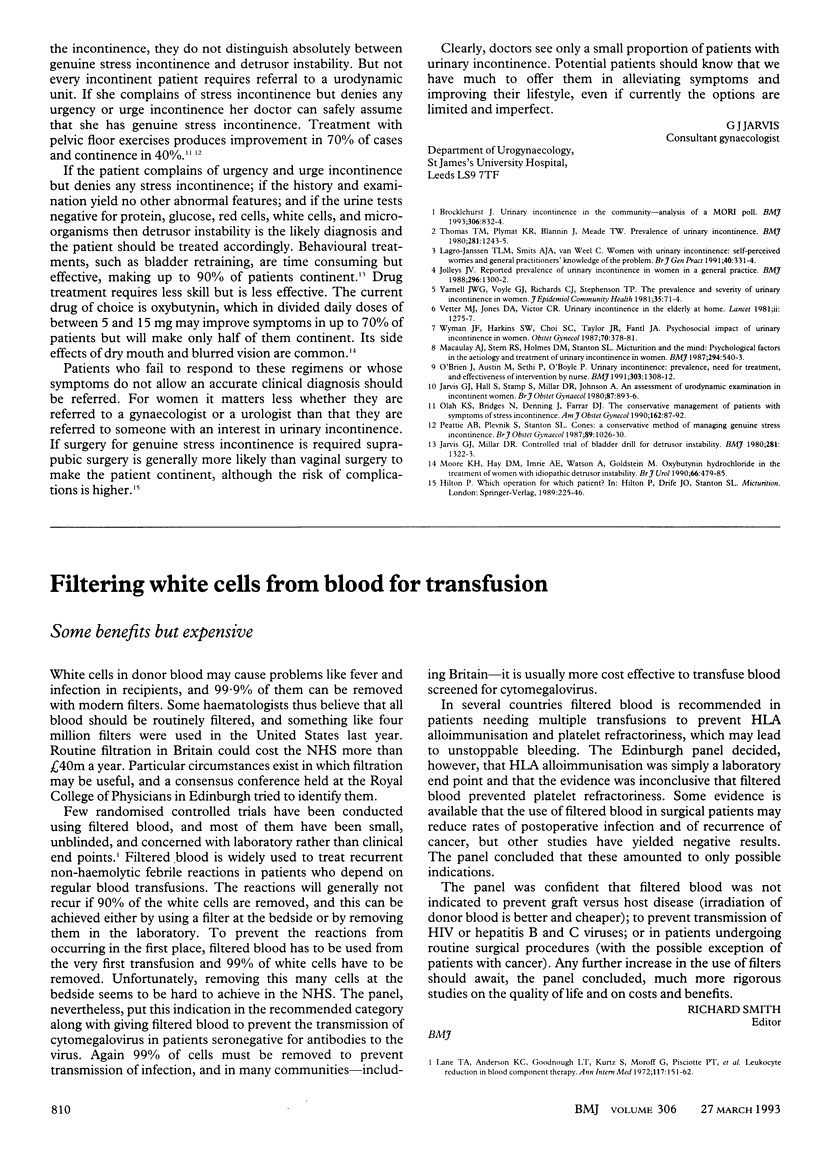Full text
PDF

Selected References
These references are in PubMed. This may not be the complete list of references from this article.
- Jarvis G. J., Hall S., Stamp S., Millar D. R., Johnson A. An assessment of urodynamic examination in incontinent women. Br J Obstet Gynaecol. 1980 Oct;87(10):893–896. doi: 10.1111/j.1471-0528.1980.tb04443.x. [DOI] [PubMed] [Google Scholar]
- Jarvis G. J., Millar D. R. Controlled trial of bladder drill for detrusor instability. Br Med J. 1980 Nov 15;281(6251):1322–1323. doi: 10.1136/bmj.281.6251.1322-a. [DOI] [PMC free article] [PubMed] [Google Scholar]
- Jolleys J. V. Reported prevalence of urinary incontinence in women in a general practice. Br Med J (Clin Res Ed) 1988 May 7;296(6632):1300–1302. doi: 10.1136/bmj.296.6632.1300. [DOI] [PMC free article] [PubMed] [Google Scholar]
- Lagro-Janssen T. L., Smits A. J., Van Weel C. Women with urinary incontinence: self-perceived worries and general practitioners' knowledge of problem. Br J Gen Pract. 1990 Aug;40(337):331–334. [PMC free article] [PubMed] [Google Scholar]
- Macaulay A. J., Stern R. S., Holmes D. M., Stanton S. L. Micturition and the mind: psychological factors in the aetiology and treatment of urinary symptoms in women. Br Med J (Clin Res Ed) 1987 Feb 28;294(6571):540–543. doi: 10.1136/bmj.294.6571.540. [DOI] [PMC free article] [PubMed] [Google Scholar]
- Moore K. H., Hay D. M., Imrie A. E., Watson A., Goldstein M. Oxybutynin hydrochloride (3 mg) in the treatment of women with idiopathic detrusor instability. Br J Urol. 1990 Nov;66(5):479–485. doi: 10.1111/j.1464-410x.1990.tb14992.x. [DOI] [PubMed] [Google Scholar]
- O'Brien J., Austin M., Sethi P., O'Boyle P. Urinary incontinence: prevalence, need for treatment, and effectiveness of intervention by nurse. BMJ. 1991 Nov 23;303(6813):1308–1312. doi: 10.1136/bmj.303.6813.1308. [DOI] [PMC free article] [PubMed] [Google Scholar]
- Oláh K. S., Bridges N., Denning J., Farrar D. J. The conservative management of patients with symptoms of stress incontinence: a randomized, prospective study comparing weighted vaginal cones and interferential therapy. Am J Obstet Gynecol. 1990 Jan;162(1):87–92. doi: 10.1016/0002-9378(90)90827-t. [DOI] [PubMed] [Google Scholar]
- Thomas T. M., Plymat K. R., Blannin J., Meade T. W. Prevalence of urinary incontinence. Br Med J. 1980 Nov 8;281(6250):1243–1245. doi: 10.1136/bmj.281.6250.1243. [DOI] [PMC free article] [PubMed] [Google Scholar]
- Vetter N. J., Jones D. A., Victor C. R. Urinary incontinence in the elderly at home. Lancet. 1981 Dec 5;2(8258):1275–1277. doi: 10.1016/s0140-6736(81)91504-x. [DOI] [PubMed] [Google Scholar]
- Wyman J. F., Harkins S. W., Choi S. C., Taylor J. R., Fantl J. A. Psychosocial impact of urinary incontinence in women. Obstet Gynecol. 1987 Sep;70(3 Pt 1):378–381. [PubMed] [Google Scholar]
- Yarnell J. W., Voyle G. J., Richards C. J., Stephenson T. P. The prevalence and severity of urinary incontinence in women. J Epidemiol Community Health. 1981 Mar;35(1):71–74. doi: 10.1136/jech.35.1.71. [DOI] [PMC free article] [PubMed] [Google Scholar]


